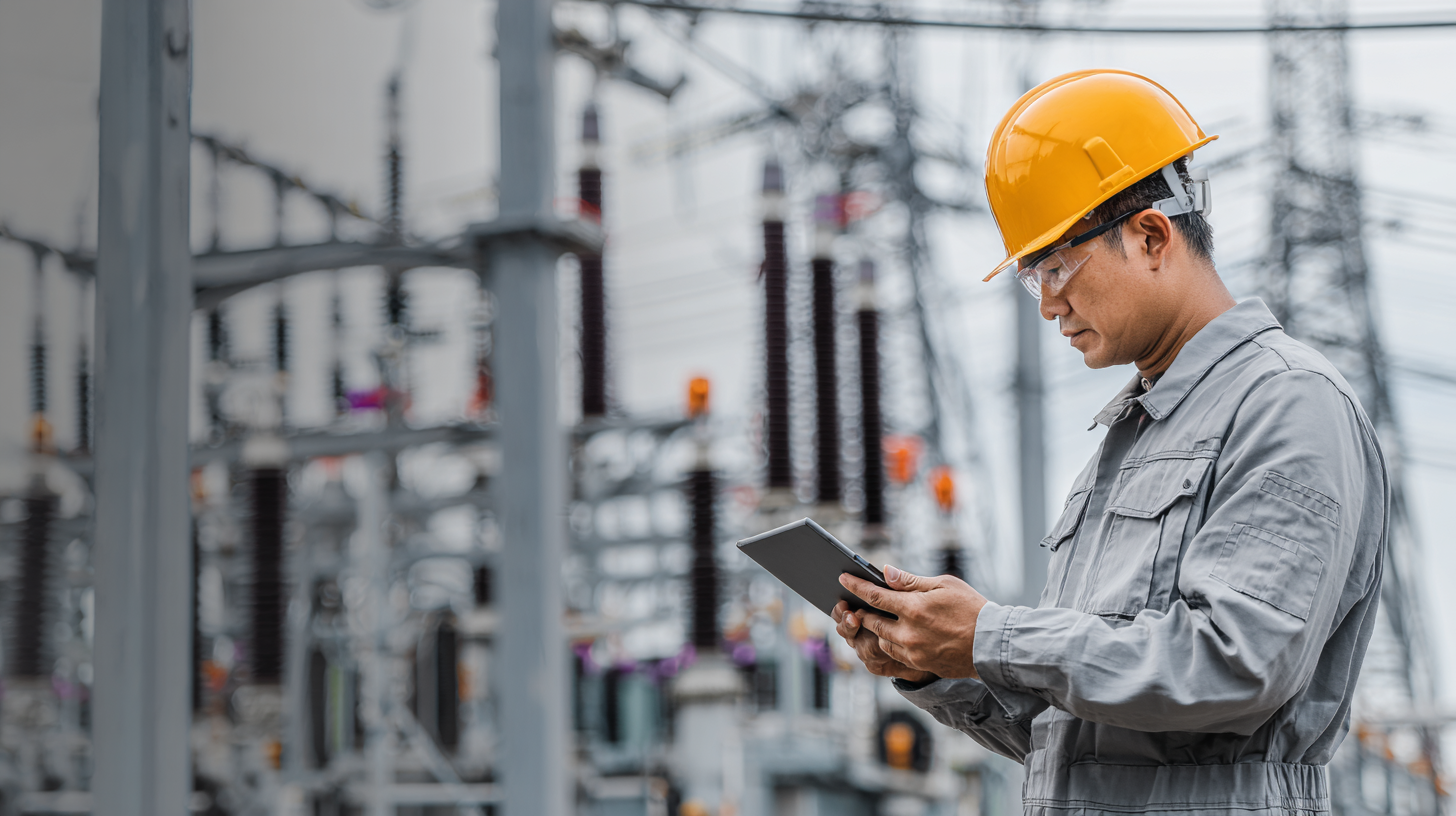
AI in Manufacturing: Revolutionizing Energy Demand Forecasting
Artificial Intelligence (AI) is reshaping industries in unprecedented ways. In manufacturing, where efficiency and precision are paramount, the adoption of AI technologies is not just a trend; it’s a revolution. One area where AI is making significant strides is energy demand forecasting. Understanding how AI can enhance energy management in this vital industry can have far-reaching implications for sustainability, operational efficiency, and cost management.
The Importance of Energy Demand Forecasting in Manufacturing
Energy management is a critical aspect of manufacturing, often determining a plant’s operational costs and efficiency. Accurate energy demand forecasting enables manufacturers to predict how much energy they will require at various times, allowing for optimized energy procurement and utilization. By anticipating fluctuations in energy demand, you can not only minimize unnecessary expenses but also ensure that your production processes run smoothly without costly energy shortages.
When you accurately forecast energy demands, it becomes easier to negotiate better energy contracts, anticipate peak usage times, and implement strategies to reduce consumption during off-peak hours. Moreover, improved forecasting could lead to a lower carbon footprint, aligning your practices with global sustainability goals.

Traditional Methods of Energy Demand Forecasting
Traditionally, energy demand forecasting in manufacturing has relied on various statistical methods and historical data analyses. Techniques such as time-series analysis, regression models, and seasonal decomposition have been the staples of this approach. While these methods can indeed offer valuable insights, they often fall short in dynamically changing environments, where factors such as market fluctuations, production schedules, and even unpredictable weather events come into play.
Moreover, manual forecasting processes can be tedious, prone to error, and significantly time-consuming. This is where AI comes into the picture, demonstrating its ability to not only analyze larger sets of data more efficiently but also to learn from new data as it becomes available.
How AI is Revolutionizing Energy Demand Forecasting
AI technologies, particularly machine learning and deep learning, are transforming energy demand forecasting in various ways. Through vast data analysis and predictive modeling, AI can identify patterns and trends that human analysts might overlook. Neural networks, for example, can analyze complex datasets, learning from past demand patterns, production schedules, and even external variables such as weather conditions or economic indicators.
This capability allows for highly accurate energy demand forecasts. The better your forecasts are, the more agile your operations will be, allowing you to effectively manage costs and ensure the sustainability of your production processes. Additionally, AI’s predictive abilities can enhance your responsiveness to sudden changes in demand, enabling you to adjust production schedules in real-time.

Key Technologies in AI-Driven Energy Demand Forecasting
When it comes to AI-driven forecasting, various technologies come into play. Some of the most prominent include:
Machine Learning
Machine learning algorithms are at the core of AI in energy demand forecasting. These algorithms can analyze vast amounts of data over time, identifying intricate patterns in energy usage that help you accurately predict future demands. Unlike traditional methods that rely on static models, machine learning continuously refines its predictions as new data becomes available.
Neural Networks
Neural networks facilitate complex pattern recognition in large datasets. By mimicking the human brain’s connections, these networks can recognize subtle trends and relationships within the data. For energy forecasting, this means better accuracy and the ability to incorporate multiple variables into predictions.
Big Data Analytics
The explosion of data generated in manufacturing environments necessitates robust analytics tools. Big data analytics can process large volumes of structured and unstructured data, leading to enhanced insights into energy consumption and demand. The integration of Big Data with AI allows for a more nuanced understanding of energy needs across various operational scenarios.
Challenges in Implementing AI for Energy Demand Forecasting
While the benefits of AI in energy demand forecasting are evident, implementing these technologies is not without challenges. As you consider adopting AI solutions in your manufacturing processes, it’s essential to be aware of the potential hurdles.
Data Quality and Availability
AI relies heavily on high-quality data. If the data gathered is incomplete or inaccurate, the insights generated may lead to misguided decisions. Ensuring data integrity, consistency, and availability is crucial for successful AI implementation. You may need to invest in data governance practices to ensure that data collected from various sources maintains high standards.

Resistance to Change
Cultural resistance within organizations can pose significant challenges when integrating AI technologies. Stakeholders accustomed to traditional forecasting methods may be reluctant to adopt new tools that employ advanced algorithms. To foster acceptance, it’s vital to communicate the benefits of AI-enhanced forecasting effectively and offer adequate training resources.
Ethical Considerations
As with all AI applications, ethical considerations cannot be overlooked. The transparent use of AI algorithms, particularly regarding how energy consumption data is utilized, is essential. You should engage in discussions about data privacy and ethical considerations to build trust both internally and among stakeholders.
Case Studies: Successful AI Implementation
Understanding real-world applications can shed light on how AI revolutionizes energy demand forecasting. Let’s explore a few successful case studies that demonstrate the effectiveness of AI in manufacturing settings.
Case Study 1: A Leading Automotive Manufacturer
One of the leading automotive manufacturers implemented AI-driven energy demand forecasting to optimize its energy procurement strategy. By analyzing historical production data and market trends, the manufacturer was able to better predict its energy needs. The new AI system identified cost-saving opportunities, leading to a 15% reduction in energy spend. Importantly, this success did not stop at cost savings; it also improved overall operational efficiency and reduced their carbon footprint.
Case Study 2: A Food Processing Plant
In another example, a food processing plant adopted machine learning algorithms for its energy demand forecasting. Using AI, the facility could analyze energy consumption patterns across different production lines in real-time. This implementation resulted in a significant decrease in peak energy consumption while optimizing production schedules to maximize efficiency. The return on investment was seen within just a few months of deployment.
The Future of AI in Energy Demand Forecasting
As AI technologies continue to advance, their role in transforming energy demand forecasting will only become more pronounced. Future developments may include more sophisticated algorithms capable of analyzing real-time data and generating predictive insights instantaneously. You can expect greater integration of Internet of Things (IoT) devices, which will provide continuous streams of data from manufacturing processes, feeding AI systems with the real-time information needed for accurate forecasting.
Moreover, the evolution of edge computing technologies will enhance AI capabilities by allowing data to be processed closer to its source. This means faster decision-making based on real-time analytics, enabling manufacturers to react promptly to changes in energy demands.
Best Practices for Implementing AI in Your Energy Forecasting Strategy
As you embark on your journey to integrate AI into your energy demand forecasting, consider following these best practices to ensure a successful implementation.
Start Small
It’s often beneficial to begin with a pilot project. Identify a specific manufacturing process or test environment where you can implement AI-driven forecasting. This will allow you to troubleshoot and refine your approach before a larger rollout. By starting small, you can gather valuable insights and build on initial successes.
Foster Cross-Functional Collaboration
Implementing AI necessitates collaboration across departments. From production teams to IT professionals, you’ll need input from various stakeholders to develop an effective AI strategy. By fostering cross-functional collaboration, you can ensure that all perspectives are considered and improve the chances of a successful implementation.
Invest in Training and Skill Development
Equipping your team with the necessary skills to work with AI technologies is essential. AI awareness training programs can familiarize your team with both the capabilities and limitations of AI. Continuous skill development will empower your workforce to engage with these new technologies effectively.
Ensure Ongoing Evaluation and Adjustment
AI technology is not static; it evolves continuously. As you implement AI-driven forecasting, it’s important to regularly evaluate and adjust your systems to maximize their effectiveness. Constant evaluation will allow you to refine your forecasting methods, ensuring that you stay ahead of changing energy demands and market conditions.
Conclusion
AI is undeniably revolutionizing energy demand forecasting in the manufacturing sector. With its ability to analyze vast datasets, recognize patterns, and provide predictive insights, AI can help you optimize your energy management practices while reducing costs and enhancing sustainability.
As you consider adopting AI-driven solutions for forecasting energy demand in your manufacturing operations, keep in mind the challenges and best practices we’ve discussed. With careful planning, investment in training, and an openness to innovation, you can leverage these advancements to your advantage.
Feel free to clap for this article if you found it informative. I would love to hear your thoughts, so please leave a comment with your reflections or questions. Don’t forget to subscribe to my Medium newsletter for the latest updates and insights on how AI is changing various industries, including manufacturing!
